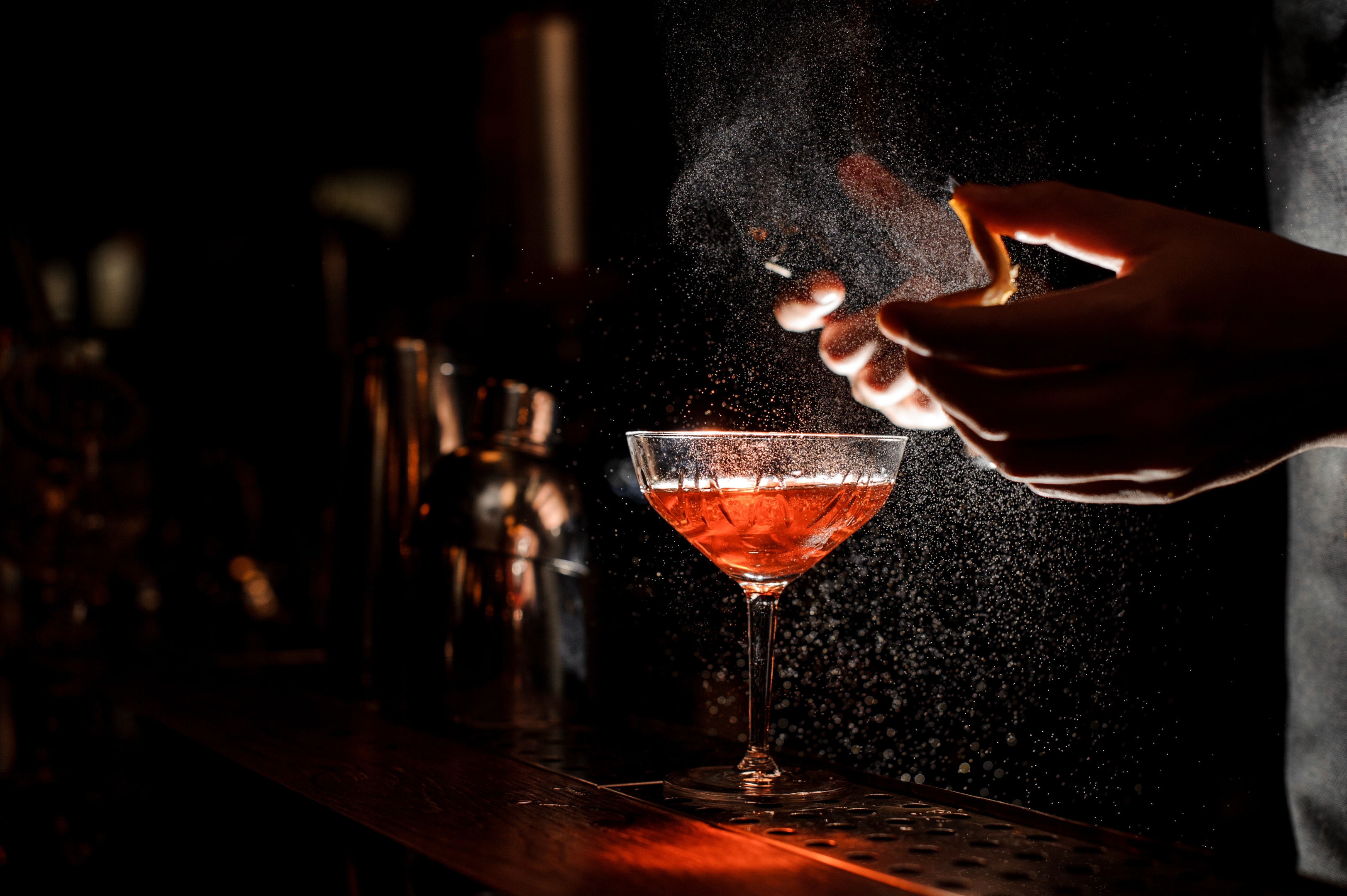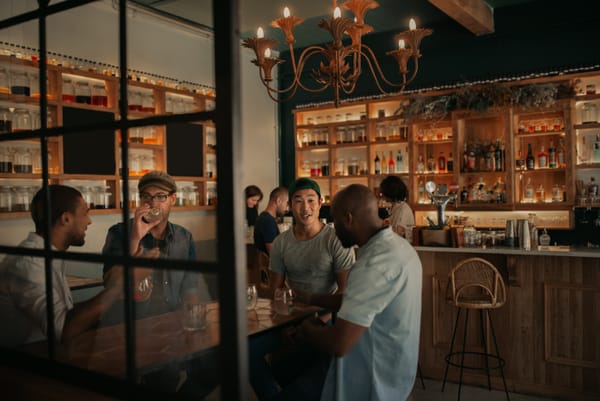Ask any bartender and they'll say the same exact thing. Everyone deserves a drink at a bar, even if that beverage does not include alcohol. And with recent trends showing younger people are drinking less alcohol for a range of reasons, it's time to address the elephant in the room. The mocktail is becoming the best way to attract the sober curious crowd without scaring away regulars who would still love to drink alcohol after work.
The mocktail, also known as an alcohol-free cocktail, isn’t just a luxury drink found in high-end bars. Sit-down restaurants, dive bars, and other types of restaurants are starting to offer mocktails to give their patrons another reason to gather with friends or enjoy a night out on a date. And with alcohol manufacturers creating non-alcoholic drinks and zero-proof drinks, mocktails are here to stay. Let's dive into the mocktail trend, looking at how it differs from typical non-alcoholic drinks like a virgin Mojito, and the best ways for a bar to include mocktails on their menu.
What is a mocktail? It's more than cranberry juice and club soda.
A mocktail is a non-alcoholic beverage expertly crafted to rival the flavors of a normal cocktail. To give mocktails that extra appeal, bartenders create each drink to emphasize unique flavors that guests wouldn’t typically find in cocktails and other non-alcoholic beverages.
Differences between mocktails and non-alcoholic beverages

Imitation may be the sincerest form of flattery, but not all mocktails are crafted to recreate the exact kick of a gin or tequila. While it is true that everyone loves a Shirley Temple, the best mocktails know how to tempt the sober curious with something different. Since mocktails are all about unique flavors, bartenders combine bitters, syrups, and fruit juices with other common bar ingredients, such as lemon-lime soda and fresh fruit slices, all so the drink can taste amazing and compete against its alcoholic counterpart.
Another major difference between mocktails and other non-alcoholic drinks is the effort placed into making each drink. The most popular non-alcoholic drinks like the mighty club soda and lemon or even a virgin mojito, are found on every bar menu. They’re easy to order and even easier to make. Mocktails, however, offer a different perspective to these ubiquitous drinks. A bartender can go beyond expectations by adding smoked sage, yuzu- lemon juice, and other interesting ingredients not found in the cocktail aisle of a grocery store.
The rise of the modern mocktail

Bars have always been gathering places for anyone looking for some company and a drink. Think of shows like Cheers, How I Met Your Mother, or even Family Guy, where a bar acts as a locus for unforgettable meetups and fun antics. Beyond those sitcoms, bars serving alcohol offered patrons more reasons to unwind and socialize with others after a long workday.
We all know the classic drinks and cocktails bars serve to guests. Aside from a margarita or mojito hydrating patrons, bars also started to serve non-alcoholic drinks like the Roy Roger and Arnold Palmer, so sober folk would still have a reason to stop by and socialize without feeling left out. While those non-alcoholic drinks are a great way to keep that crowd interested, the growing sober curious movement throughout the past few decades has created a demand for complex yet interesting drinks that don’t feature any alcohol.
As the art of mixology moved beyond a simple pour of wine or beer into a glass, mocktails evolved into a nuanced form of drink-making with unique flavors that would shock any dedicated cocktail lover until Dry January. From a sweet yet smokey kombucha to an unstoppable phony Negroni, mocktails embody a change in how bar patrons expect their drinking experience. It’s no longer about alcohol content. Mocktails are about the flavors, and the feel of the premium drink in a glass.
Popular mocktails to order at a bar

The best non-alcoholic drinks are the ones that go beyond that usual list everyone's memorized from a cocktail bar menu. Anyone can order a Roy Rogers or Virgin Bloody Mary with their eyes closed. That's why we put together a few unique but popular mocktails that any bar can include in their nightly pours. Just be sure to keep some fresh lemon juice in stock.
- A blueberry pomegranate lemonade might not seem like a typical mocktail to order at a bar, but that's exactly the point. This drink offers such a wide variety of flavors with a simple list of ingredients that it's essentially a blank canvas for any bar to experiment with. Mix some lemon juice, sugar, a splash of pomegranate juice, and fresh blueberries, then serve in a nice glass with ice. To bring out some extra tart flavors, use fresh lime juice instead of lemon juice. For sparkle in the drink, add some ginger ale or tonic water.
- Many drinks try to match the tastes of a phony Negroni, but few non-alcoholic spirits get close to this iconic mocktail. This is perhaps the only drink that can be premade and served to guests as needed. If the budget permits, a bar can order phony Negroni bundles to be poured and mixed into a glass without any extra effort. Just don't forget to personalize it with a few extra ingredients too, like sparkling apple cider or even maraschino cherries. Then again, nothing will beat the classic orange peel sliver, as recommended by Anthony Bourdain himself.

- A blood orange martini is the best drink to serve all year round since its flavors can match every season. Mix tangy blood orange juice with some club soda, and add orange slices as garnish. For more spring and summer flavors, mix in some honey. To give this drink a twist for the winter and fall seasons, add a few drops of vanilla. For an extra kick of flavor that'll put this margarita above other alcohol-free options, it's recommended bars use a trusted non-alcoholic tequila alternative.
- The Virgin Malibu Bay Breeze has all the fun and taste of other alcoholic drinks, but with a simplicity to stupefy the sober and non-sober crowd alike. In a cocktail shaker, mix in pineapple juice with cranberry and lime juice. Similar to the blueberry pomegranate, the Malibu Bay Breeze invites some experimentation. Even adding a splash of sparkling water can do wonders for this non-alcoholic cocktail.
Why should a bar serve mocktails?

Mocktails aren’t another passing drink fad. Greg Siventko, veteran bartender and Senior Manager at SpotOn, says every bar should start building its mocktail menu alongside normal alcoholic beverages. “We’re starting to see mocktail sales reach a profit margin of 60-80%,” says Siventko. “That’s nearly the same as normal alcoholic drinks.” And with more brands like Heineken and Molson Coors producing nonalcoholic drinks, a mocktail menu will show guests your bar pays attention to their drinking appetites.
Did you know the non-alcoholic drink market now exceeds half a billion dollars a year, up 31% in the past year?
Guests are surprisingly aware of what goes into their drinks at a bar since anyone can easily Google a drink recipe before ordering at happy hour. However, a mocktail isn’t about the quality of the lemon slice, the cost of the drink itself, or even the type of seltzer water poured into a cocktail mixer. Mocktails invite every type of drinker to enjoy the bar and the company of those around them without expectations or judgment.
How to craft a mocktail menu for any bar

Creating a mocktail menu shouldn’t seem like rocket science. And as all bars know, most guests don’t want to feel overwhelmed by too many options while ordering a drink, no matter how complex the mocktail may be. They simply want to point at a menu, speak to a bartender, and get their drink.
Like any menu planning in a bar, the key to a fun mocktail menu relies on the ability to cater to a wide range of tastes and expectations. Even though mocktail drinkers are staying sober, they still want a delicious drink with unique flavors to complement a night of fun. To help make sure your mocktails don’t stray too far into the avant-garde, check out these easy tips for sculpting a mocktail menu to match your bar’s budget and vibe.
Double-check your point-of-sale reports

A bar’s point-of-sale system isn’t just a fancy cash register. It possesses all sorts of data points and reports that can help any bar or restaurant owner analyze sales trends over a period of time. To start finding solid drink options to turn into mocktails, access your product mix report to get a strong look at your alcohol sales vs. non-alcoholic sales over the past year.
From there, you can see which drinks can be recreated as a mocktail with a little twist in their flavor, all with a slight upcharge in the price as well. A $2 club soda and iced tea sale won’t make much of a difference, but a $12 zero-proof Manhattan might even yield more profits down the road.
Plan for drinks and flavors beyond grapefruit juice
There was a time when most bars offered the same types of drinks, with a few variations here and there. However, mocktails allow bars to shake up patron expectations by creating drinks that would shine beyond the usual list of beverages. Your mocktails should evoke a sense of curiosity in drinkers so they might be tempted to try a beverage that isn't obviously a twist on store-bought orange juice.

Your profit margin report will be your greatest tool for sparking that curiosity. After accessing your POS reporting, you should get a good view of the beverages making a profit and the drinks that aren’t even worth the squeeze from a lemon. From there, you can build a baseline for what ingredients can be repurposed for your mocktail menu, and which ingredients you can purchase to add that extra sparkle.
Are drinks and cocktails with ginger beer making the most profit? Are patrons buying more drinks with a tiny umbrella than other beverages? Again, you shouldn’t be looking to remove every bottle of non-alcoholic sparkling wine off your shelves. Just some specific flavors that would tantalize and compliment the other food and drinks on your menu.











